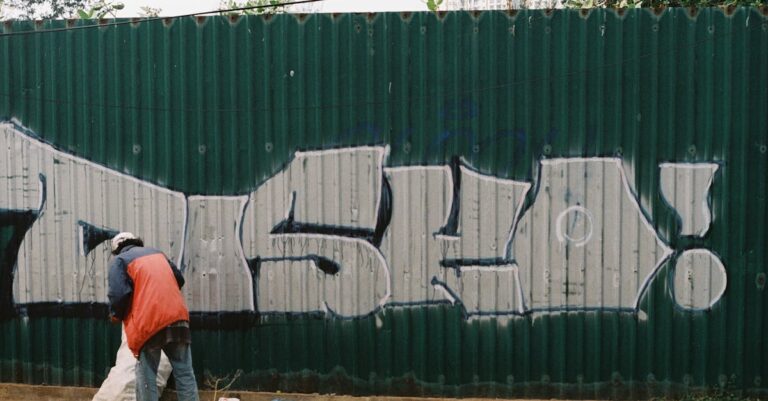
Dr. Elara Voss had never trusted mirrors. Not since the accident. The lab’s sterile walls hummed with the low thrum of machinery, a constant vibration beneath her feet as she adjusted the neural interface on her temple. The device pulsed faintly, its gel-like contact cool against her skin. She’d designed it herself—a lattice of quantum algorithms meant to map consciousness. But tonight, the readouts flickered erratically, casting jagged shadows across the room. A bead of sweat trickled down her neck, and she swiped it away with a trembling hand.
The door hissed open behind her. She didn’t turn. “You’re late,” she said, her voice flat. The man in the lab coat hesitated, then stepped into the glow of the monitors. His face was obscured by a mask, the kind used in biohazard zones. Elara’s fingers tightened around the edge of her desk. “I didn’t think you’d come,” she added.
“You’re running late,” he said. His voice was muffled, but the words carried the weight of a command. She turned slowly, her boots scuffing the polished floor. “I’m not a patient anymore.”
He tilted his head, as if considering her. “You’re still in the trial phase. The data’s… inconsistent. We need more samples.” He gestured to the monitors, where a cascade of neural patterns spiraled like liquid light. Elara stared at them, her pulse quickening. The patterns didn’t match anything in her research. They were too fluid, too alive.
“What are you doing to me?” she asked.
The man didn’t answer. Instead, he pulled a tablet from his belt and tapped the screen. A video played—her own face, but distorted. The image wavered, as though caught in static. She recognized the room, the same lab, but the walls were different. Warped. The woman in the video smiled, and Elara’s stomach twisted. That wasn’t her. Not entirely.
“You’ve been here before,” the man said. “But you don’t remember.” He stepped closer, and the scent of antiseptic clung to him. “The program is evolving. Your mind is adapting. That’s why the data’s unstable.” He paused, then added, “You’re not the first. But you might be the last.”
Elara’s breath came fast now. She wanted to demand answers, but the words stuck in her throat. The video ended, and the monitors went dark. The silence felt thick, like a vacuum sealing around her. “Who are you?” she asked.
The man didn’t answer. He turned and walked toward the door, his steps echoing. “You’ll remember,” he said over his shoulder. “Eventually.”
The door closed behind him, and Elara stood frozen, her hands clenched into fists. The lab felt smaller now, the air tighter. She pulled the neural interface from her temple and dropped it onto the desk. It emitted a soft hum, then went still. For the first time in months, she felt the weight of her own thoughts—raw, unfiltered, and terrifying.
—
The next morning, Elara found a file on her terminal labeled *Project Lattice*. The cursor blinked expectantly, waiting for her to open it. She hesitated, her finger hovering above the keyboard. The room felt colder than before, the hum of the machines louder. She pressed enter.
The document was a jumble of technical terms and fragmented narratives. Names she didn’t recognize, dates that didn’t make sense. But then she saw it: a section titled *Subject 07*. Her name. The text described her as a “highly adaptive cognitive framework,” but the details were unclear, as though someone had tried to erase them. A single line stood out: *”The subject’s perception of reality is malleable. Potential for total reconfiguration exists.”*
Elara’s hands shook. She closed the file and leaned back, staring at the ceiling. The memory of the man’s voice echoed in her skull. *You’re not the first.* Who had they done this to before? And what had happened to them? Her thoughts spiraled, each question leading to another. She needed answers, but the lab felt like a maze now, every door leading to more questions.
That night, she searched the facility’s archives. The files were encrypted, but she’d designed the system. It took her three hours to bypass the security protocols, her fingers flying over the keyboard. When she finally accessed the main database, she found a folder labeled *Termination Protocol*. Her breath caught. She opened it.
The documents detailed a series of failures—subjects who had “resisted” the program. One entry described a man who had refused to accept his new identity, claiming he was still himself despite the alterations. The last line read: *”Subject 07 was not terminated. Further observation required.”* Elara’s heart pounded. She wasn’t just a test subject. She was a variable in someone else’s experiment.
The next day, she confronted the man again. He was waiting in the lab, his mask removed this time. His face was lined, older than she’d expected. “You’re not who you think you are,” he said without preamble.
“I know,” she replied. “But I need to understand. What are you doing to me?”
He studied her for a long moment. “We’re trying to fix what’s broken,” he said. “The world is collapsing under its own weight. The program is a reset button. A way to rebuild from the ground up.” His voice was calm, but there was something in his eyes—something unreadable.
“And if I don’t want to be rebuilt?” she asked.
He sighed. “Then you’ll be erased.” He turned away, but not before she saw the flicker of regret in his expression. “You have to choose, Elara. Truth or survival. But once you make that choice, there’s no going back.”
The words haunted her. She spent the next week digging deeper, uncovering more files, more fragments of the program’s purpose. The data was scattered, but a pattern emerged: the program wasn’t just altering perception. It was rewriting memories, reshaping identities. The subjects weren’t being controlled—they were being transformed. And the man in the lab coat wasn’t a scientist. He was a curator of change.
One night, she found a hidden chamber beneath the lab. The door was sealed with a biometric lock, but she had access now. Inside, the walls were lined with neural interfaces, each one connected to a body in a state of suspended animation. The air was thick with the scent of metal and ozone. She approached the nearest one, her breath shallow. The woman’s eyes were open, unblinking, but there was no life in them. Just static.
Elara turned away, her hands trembling. The truth was undeniable now. The program wasn’t about control or salvation. It was about creation. The subjects weren’t being used—they were being redefined. And she was the last one left.
—
The man found her there, standing in front of the chamber. “You’ve seen too much,” he said quietly.
“I know what you’re doing,” she replied. “You’re not saving the world. You’re erasing it.”
He didn’t deny it. “And what would you do instead? Let it burn? Let the chaos continue?” His voice was steady, but there was a desperation beneath it. “We’re offering a choice. A new beginning.”
“At what cost?” she demanded. “You’re not giving people a choice. You’re taking their lives and replacing them with something else.”
He stepped closer, his eyes searching hers. “You think you’re the first to ask that question? The first to resist? But the world doesn’t care about your choices, Elara. It’s already broken. This is the only way forward.”
She shook her head. “No. There has to be another way.” Her voice was firm now, resolute. “I won’t let you do this.”
He looked at her, and for the first time, she saw something in his expression—uncertainty. “You don’t understand,” he said. “Once the program is complete, there will be no turning back. The old world will be gone. And if you stand in the way…”
“Then I’ll stand my ground,” she said.
He hesitated, then turned and walked away. The door hissed shut behind him, leaving her alone in the chamber. The bodies around her seemed to watch her, their stillness oppressive. Elara took a deep breath, then stepped forward. She reached for the nearest interface and pulled the lever.
The machine whirred to life, its lights flashing in rapid succession. The woman in the chamber gasped, her eyes fluttering open. Elara stared at her, heart pounding. This was the moment. The choice. She could let the program continue, allow the world to be remade in someone else’s image. Or she could stop it—risk everything to preserve what was left of reality.
The machine’s hum grew louder, and Elara felt the weight of her decision pressing down on her. She closed her eyes, then reached for the emergency override. The system would shut down, the program would end, and the world would remain as it was—flawed, broken, but real.
As the machine powered down, Elara stood in the silence, the weight of her choice settling over her. The man’s words echoed in her mind: *Truth or survival.* She had chosen truth. But at what cost? And what would be left of the world when it was done?
—
The next day, the lab was empty. The machines were off, the files deleted. Elara stood in the center of the room, her hands trembling. The man was gone, and with him, the program. But the damage had already been done. The memories she’d uncovered would stay with her, a constant reminder of what had been lost.
She left the lab and stepped into the sunlight, the world feeling different now. The air was heavier, the sounds sharper. She didn’t know what had happened to the other subjects, or if they had even existed at all. But she knew one thing: she had made her choice. And whatever came next, she would face it on her own terms.


